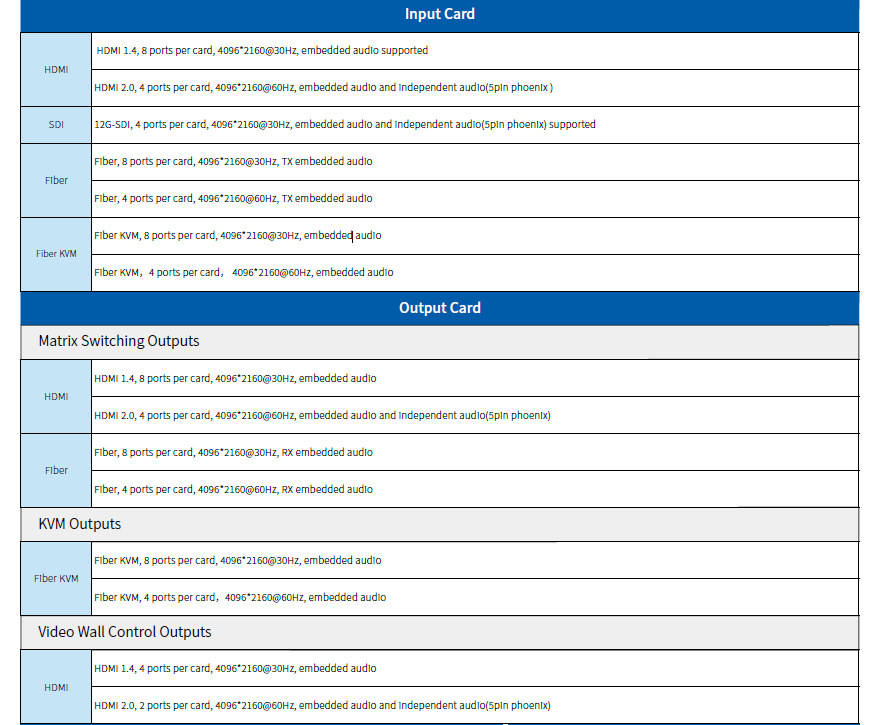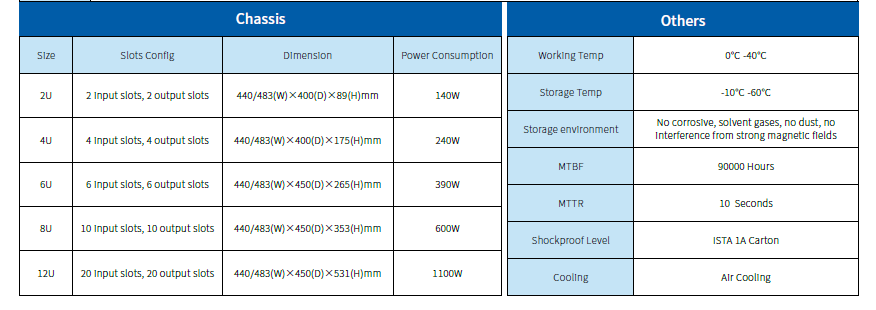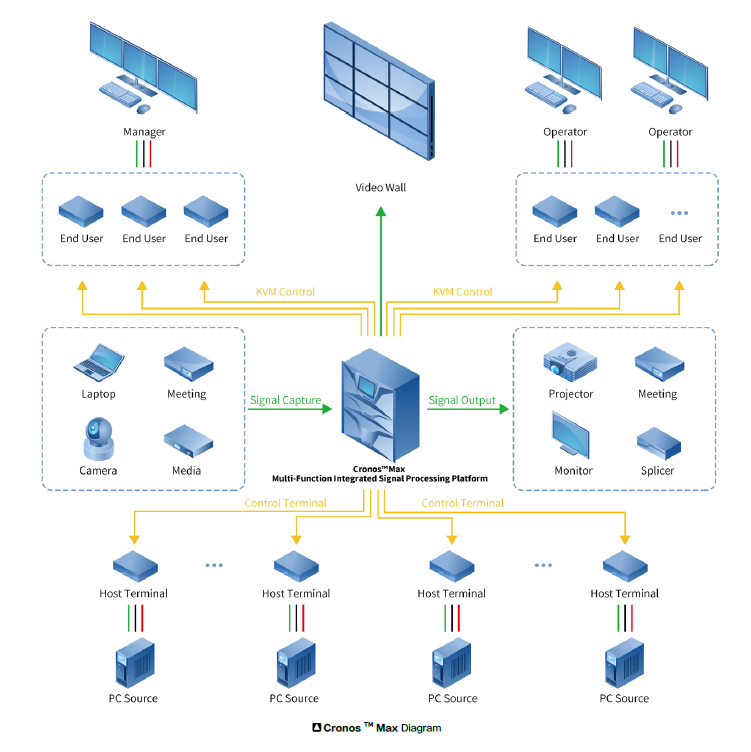The Cronos ™ Max is the second-generation ultra resolution and high-performance comprehensive signal processing platform. It continues pure
FPGA hardware architecture and modular design concept to ensure stable and efficient performance. It achieves optimized port deployment and space
utilization solutions. Advanced system architecture and algorithms give Cronos ™ Max better processing capabilities. The device supports processing
more than 700 channels of audio and video data, and can easily handle large-scale UH resolution application scenarios.
Cronos ™ Max multi-functional comprehensive signal processing platform supports seamless matrix switching, large scale video wall controlling,
KVM, etc., and supports 4K@60 UH signal collection and transmission, the resolution reach full 4:4:4 chroma sampling in RGB color gamut, which can
provide high-quality image restoration and image details; Integrating one device effectively reduces complexity links and enables resource sharing within
system.
· Digital bus routing structure, the system's signals are exclusive to their own dedicated data channels to in order to avoid accidentally channel blocking and cross data transmission
· Full hardware FPGA architecture, built-in core computing mechanism, excellent image processing performance
· Supports 4K @ 60 ultra high definition video signal acquisition and transmission, video image resolution can reach all 4:4:4 chroma sampling in RGB gamut. Provides high quality image reproduction and image detail for video playback
· Board type hotswappable structure, high chassis integration, high device stability, maximum expandable capacity to 320 input signals, 320 output signals.
· Input and output board mixing function
· Each signal dynamically sets a point-to-point dedicated line data channel. Each signal has its own dedicated channel for transmission, which can switch in a nanosecond with no black field interval.
· Integrated video and audio switching
· Supports signal character overlay functions, you can set multiple display areas, font sizes, colors, and superimpose images.
· Support for 1000 sets of scene saves and automatic polling
· EDID management and HDCP functionality
· User-defined output resolution
· Supports codec transmissions of IP signals such as H.264 / AVC and H.265 / HEVC
· Multi-type client control, not only with the PC version client but also a mobile version terminal. Supports multiple different types of devices for operation and control and supports keyboard, TCP/ IP, RS232 control and other control methods.
· With RRTA (Resolution Real-Time Total Adaptation ) technology, a single processor can simultaneously control four large groups of different resolutions. Can support LED, LCD, projection lamp multiple display units at the same time
· Supports single cards with up to 16 windows. Also supports zooming, roaming, seamless switching of real-time sources, arbitrary overlay of windows, etc.
· Supports the collection and output display of the overall content output to the large screen; supports 60Hz local video echo and network echo
· The large screen group supports mouse and keyboard signals and can use the mouse arrow to perform a series of functions on the window and extend the screen group plan over the entire group of large screens.
· Supports the direct control function of the signal source which is known as the RealControl function. The processor can use the OSD mouse to access the signal source to open the window on the large screen, thereby directly controlling the PC corresponding to the signal source by using an external mouse.
· Input and output signal preview and echo
· Displays subtitles on the output large screen as a whole. Subtitles can be displayed statically or dynamically.
· Input and output signal preview and echo
· Emergency power loss prevention, state storage memory
· Power redundancy backup support
· Monitoring alarms
· Support for multi-user and user rights management
· Front panel touch screen which can control matrix switching and pre-planning recall for user operation
· Computer agent management which enables remote KVM
· control of computing, etc.
· Supports audio transmissions between KVM terminals
· Supports agent user rights management which can group host terminals and users and assign different access levels through grouping. At the same time, it supports push functions, which can push local agent signals to other display terminals and can also pull other display signals.
· Support for USB device transparent transmissions, U disk, U-Key, camera, touch screen and other USB peripheral data transmission, pure hardware non-IP architecture and guaranteed USB data transmission process security
· Full English visual operation interface, users can quickly preview the status of the signal source to be switched before switching the signal source; effectively improve the management’s interaction between the agents and the large screen.
· Intelligent rights interaction management system to achieve fast operation control of signal sources between different users


